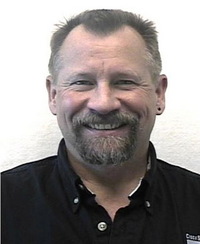 Bob Aiken is the Director of Engineering for Cisco's International Academic Research and Technology Initiatives (ARTI).
Bob manages a team of respected Internet and network technology experts who help identify, define and accelerate
Internet architectures and technologies via Cisco's university research and advanced network research infrastructure programs.
Bob is a co-architect and co-lead with Javad Boroumand for the strategic National Lambda Rail (NLR) research environment and infrastructure.
Prior to joining Cisco, Bob was the network and security research program manager for
DOE's Computing, Information and Communications (formerly the HPCC) program. Bob was the program manager and co-author of DOE's
Next Generation Internet (NGI) initiative, and provided technical leadership and direction for DOE's international research
network (ESnet), gigabit testbeds, and middleware and GRID programs.
In 1991, Bob spent a year at the National Science Foundation (NSF) as the National Research and Education Network
(NREN) program manager, and with colleagues Peter Ford and Hans-Werner Braun co-authored the design and architecture of
the next generation NSFNET (vBNS, Network Access Points (NAPs)), which enabled the commercialization of the Internet backbone.
Before Bob's NSF tenure, he was DOE's HPCC network program manger, ESnet program manager, and Executive director of the ESnet steering committee, as well as the creator and manager of ESnet's Network Information,
Services, and Response group during ESnet's nascent period. Prior to Bob's experience on wide area networks, Bob was responsible for managing supercomputers (e.g. CRAY) and coding their operating systems as well as providing high speed LAN based distributed services. His academic experience includes
being an Assistant Professor of Computer Science at Hood College in Maryland, an adjunct Professor at California State University Hayward,
and the Manager of Technology Services at Gettysburg College in Pennsylvania.
Bob also serves on the National Transportation Research Board (TRB)'s subcommittee on telecommuting.
Bob Aiken is the Director of Engineering for Cisco's International Academic Research and Technology Initiatives (ARTI).
Bob manages a team of respected Internet and network technology experts who help identify, define and accelerate
Internet architectures and technologies via Cisco's university research and advanced network research infrastructure programs.
Bob is a co-architect and co-lead with Javad Boroumand for the strategic National Lambda Rail (NLR) research environment and infrastructure.
Prior to joining Cisco, Bob was the network and security research program manager for
DOE's Computing, Information and Communications (formerly the HPCC) program. Bob was the program manager and co-author of DOE's
Next Generation Internet (NGI) initiative, and provided technical leadership and direction for DOE's international research
network (ESnet), gigabit testbeds, and middleware and GRID programs.
In 1991, Bob spent a year at the National Science Foundation (NSF) as the National Research and Education Network
(NREN) program manager, and with colleagues Peter Ford and Hans-Werner Braun co-authored the design and architecture of
the next generation NSFNET (vBNS, Network Access Points (NAPs)), which enabled the commercialization of the Internet backbone.
Before Bob's NSF tenure, he was DOE's HPCC network program manger, ESnet program manager, and Executive director of the ESnet steering committee, as well as the creator and manager of ESnet's Network Information,
Services, and Response group during ESnet's nascent period. Prior to Bob's experience on wide area networks, Bob was responsible for managing supercomputers (e.g. CRAY) and coding their operating systems as well as providing high speed LAN based distributed services. His academic experience includes
being an Assistant Professor of Computer Science at Hood College in Maryland, an adjunct Professor at California State University Hayward,
and the Manager of Technology Services at Gettysburg College in Pennsylvania.
Bob also serves on the National Transportation Research Board (TRB)'s subcommittee on telecommuting.
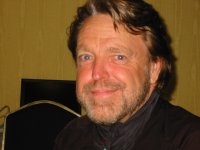 Born, Jackson Hole, Wyoming October 3, 1947
Born, Jackson Hole, Wyoming October 3, 1947
John Perry Barlow is a former Wyoming rancher and Grateful Dead lyricist. He graduated in 1969 with High Honors in comparative religion from Wesleyan University in Middletown, Connecticut.
More recently, he co-founded and still co-chairs the Electronic Frontier Foundation. He was the first to apply the term Cyberspace to the "place" it presently describes.
He has written for a diversity of publications, including Communications of the ACM, Mondo 2000, The New York Times, and Time. He has been on the masthead of Wired Magazine since it was founded. His piece on the future of copyright, "The Economy of Ideas" is taught in many law schools and his "Declaration of the Independence of Cyberspace" is posted on thousands of web sites.
In 1997, he was a Fellow at Harvard's Institute of Politics and has been, since 1998, as a Berkman Fellow at the Harvard Law School.
He works actively with several consulting groups, including Diamond Technology Partners, Vanguard, and Global Business Network.
In June 1999, FutureBanker Magazine named him "One of the 25 Most Influential People in Financial Services He writes, speaks, and consults on a broad variety of subjects, particularly digital economy.
He lives in Wyoming, New York, San Francisco, On the Road, and in Cyberspace. He has three teenaged daughters and aspires to be a good ancestor.
 Gordon Bell is a senior researcher in Microsoft's Media Presence Research Group - a part of the Bay Area Research Center (BARC) maintaining an interest in startup ventures.
Gordon Bell is a senior researcher in Microsoft's Media Presence Research Group - a part of the Bay Area Research Center (BARC) maintaining an interest in startup ventures.
Gordon Bell has been involved with the engineering of computer systems
since 1959, having graduated from M.I.T. in 1957. After a Fulbright
Scholarship in Australia and return to M.I.T. for a brief attack on the
speech recognition problem, he joined Digital Equipment Corporation. As
vice president of research and development was responsible for the
first minis and timeshared computers, including the VAX. From 1966 to
1972 he was a professor of computer science and engineering at Carnegie
Mellon University. In 1987 he established the computing directorate at
the National Science Foundation and led the cross-agency group and plan
for the first Internet.
He was a founder of The Computer History
Museum-Mountain View, CA, a Fellow of various professional organizations
,and a Member of the National Academy of Engineering. Awards include the
1991 National Medal of Technology, an honorary doctorate in engineering,
and the 2001 Eta Kappa Nu Vladimir Karapetoff Award for lifetime
accomplishments. Since joining Microsoft in 1995 as a senior
researcher, interests span scalable computing, telepresence, and
cyberizing everything personal in the MyLifeBits project. He has written
several books about computer systems, and High Tech Ventures: A Guide to
Entrepreneurial Success (1991) based on his involvement with about 80
startup companies. Hobbies have included skiing, scuba diving, and
touring France by bicycle. Bell has two children and four
grandchildren and lives in San Francisco where he works at Microsoft's
Bay Area Research Center.
 danah boyd is a Ph.D student in the
School of Information Management and Systems
at the University of California, Berkeley.
She studies how people negotiate their presentation of self in mediated social contexts to an unknown audience.
Recently, her work has focused on Friendster, blogging, mobile technologies and youth culture.
Having grown up online, danah has a native understanding of how her generation uses technology to manage their social world.
She uses this privileged position to engage in ethnography to further understand the varied behaviors that have emerged in digital culture.
With this knowledge, danah works with technology developers so that they may further empower youth and marginalized populations.
danah boyd is a Ph.D student in the
School of Information Management and Systems
at the University of California, Berkeley.
She studies how people negotiate their presentation of self in mediated social contexts to an unknown audience.
Recently, her work has focused on Friendster, blogging, mobile technologies and youth culture.
Having grown up online, danah has a native understanding of how her generation uses technology to manage their social world.
She uses this privileged position to engage in ethnography to further understand the varied behaviors that have emerged in digital culture.
With this knowledge, danah works with technology developers so that they may further empower youth and marginalized populations.
Prior to Berkeley, danah studied computer science at Brown University and sociable media at the MIT Media Lab. At Brown, danah studied how prioritization of depth cues were dependent on sex hormones and how this in turn affected 3D virtual reality performance for men and women. At MIT, danah developed a series of visualizations in order to explore social interaction in the digital world, particularly around social networks. Her thesis emphasized how people managed faceted identities in a mediated world.
She has worked as an ethnographic information for various companies, including Intel, Tribe.net and Google. She also spent five years creating and managing an online support community for V-Day, a non-profit working to end violence against women and girls worldwide.
danah blog extensively at apophenia, many-2-many and misbehaving.
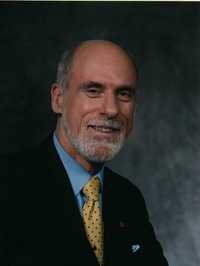 Vinton G. Cerf is senior vice president of Technology Strategy for MCI. In this role, Cerf is responsible for helping to guide corporate strategy development from the technical perspective. In the fast moving world of telecommunications and Internet technology development, technical capabilities can have a critical impact on the success of corporate business strategies including product and service development, infrastructure investment and strategic acquisitions and partnerships.
Vinton G. Cerf is senior vice president of Technology Strategy for MCI. In this role, Cerf is responsible for helping to guide corporate strategy development from the technical perspective. In the fast moving world of telecommunications and Internet technology development, technical capabilities can have a critical impact on the success of corporate business strategies including product and service development, infrastructure investment and strategic acquisitions and partnerships.
Previously, Cerf served as senior vice president of Architecture and Technology, leading a team of architects and engineers to design advanced networking frameworks including Internet-based solutions for delivering a combination of data, information, voice and video services for business and consumer use.
Widely known as one of the "Fathers of the Internet," Cerf is the co-designer of the TCP/IP protocols and the architecture of the Internet. In December 1997, President Clinton presented the U.S. National Medal of Technology to Cerf and his partner, Robert E. Kahn, for founding and developing the Internet.
Prior to rejoining MCI in 1994, Cerf was vice president of the Corporation for National Research Initiatives (CNRI). As vice president of MCI Digital Information Services from 1982-1986, he led the engineering of MCI Mail, the first commercial email service to be connected to the Internet.
During his tenure from 1976-1982 with the U.S. Department of Defense's Advanced Research Projects Agency (DARPA), Cerf played a key role leading the development of Internet and Internet-related data packet and security technologies.
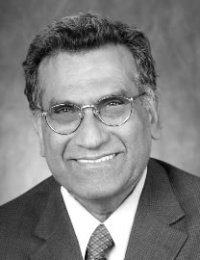 Vijay K. Dhir, professor of mechanical and aerospace engineering, was named Dean of UCLA's Henry Samueli School of Engineering and Applied Science in March 2003.
Vijay K. Dhir, professor of mechanical and aerospace engineering, was named Dean of UCLA's Henry Samueli School of Engineering and Applied Science in March 2003.
Born in India, Dhir received his Bachelor of Science degree from Punjab Engineering College in Chandigarh,
India, in 1965 and his Master of Technology degree from the Indian Institute of Technology in Kanpur, India, in 1968.
He came to the United States in 1969 to continue his university studies in mechanical engineering, receiving his Ph.D. from
the University of Kentucky
in 1972. Dhir joined the faculty at UCLA in 1974.
Dhir served as vice chair of the UCLA Department of Mechanical and Aerospace Engineering from 1988 to 1991, and was chair of that department from 1994 to 2000. From July 2001 to February 2002, he served as the school's associate dean for academic and faculty issues and as Interim Dean from February 2002 to March 2003.
He has worked to make UCLA Engineering a hub for interdisciplinary research. In the last two years, the School has won five competitive research centers from the federal government and private industry that will bring more than $100 million dollars to Southern California in the next five years to spur research and development on emerging technologies.
Dhir received trhe 2004 Max Jakob Memorial Award, the first person from UCLA to receive the award since L.M.K. Boelter, the founding dean of the School. He is a fellow of ASME and the American Nuclear Society. He was inducted into the University of Kentucky's College of Engineering Hall of Distinction in 2004. He has also received the American Society of Mechanical Engineers (ASME) Heat Transfer Memorial Award in the Science category and the Donald Q. Kern award from the American Institute of Chemical Engineers.
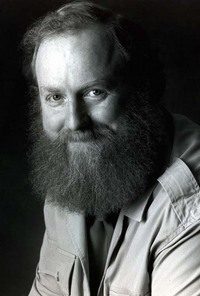 Bran Ferren is a designer and technologist working in entertainment, product development, engineering, architecture and the sciences.
He is the former President of Research and Development and Creative Technology for Walt Disney Imagineering. Prior to that, he was the President of and Senior Designer for Associates and Ferren, which Disney acquired in 1993. He left Disney in 2000 to start Applied Minds Inc., with partner Danny Hillis.
Bran Ferren is a designer and technologist working in entertainment, product development, engineering, architecture and the sciences.
He is the former President of Research and Development and Creative Technology for Walt Disney Imagineering. Prior to that, he was the President of and Senior Designer for Associates and Ferren, which Disney acquired in 1993. He left Disney in 2000 to start Applied Minds Inc., with partner Danny Hillis.
Ferren is a board member of The International Design Conference in Aspen (IDCA), and a senior advisory board member for science, advanced technology, and innovation management to seven US Government agencies, and the US Senate. His currently held positions include: National Security Agency Advisory Board, National Reconnaissance Office Technical Advisory Group, Army Science Board member, former member of Defense Science Board, Chief of Naval Operations Executive Committee, Senate Select Committee on Intelligence Technical Advisory Group, Securities and Exchange Commission Advisory Committee on Technology, Federal Communications Commission Technological Advisory Committee, National Imagery and Mapping Agency Advisory Forum, Strategic Command Advisory Board, and the Homeland Security Science and Technology Advisory Committee.
Ferren received Technical Achievement Awards from The Academy of Motion Picture Arts and Sciences for the Computer-Controlled Lightning Effects System and Laser Synchro-Cue System, as well as the Scientific and Engineering Award for an Advanced Concept Optical Printer, used for special effects cinematography. Recent awards include the 1998 Wally Russell Lifetime Achievement Award for lighting design, and a 2000 Kilby Award for significant contributions to society.
A popular guest lecturer, Ferren has addressed over 100 professional groups in the entertainment, business and scientific communities.
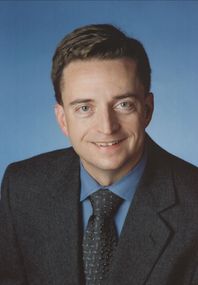 Pat Gelsinger is Senior Vice President and Chief Technology Officer of
Intel Corporation. Gelsinger joined Intel in 1979, and has more than 20
years of experience in general management and product development
positions. Gelsinger leads Intel's Corporate Technology Group, which
encompasses many Intel research activities, including leading Intel Labs
and Intel Research, and driving industry alignment with these
technologies and initiatives. As CTO, he coordinates Intel's longer-term
research efforts and helps ensure consistency from Intel's emerging
computing, networking and communications products and technologies.
Pat Gelsinger is Senior Vice President and Chief Technology Officer of
Intel Corporation. Gelsinger joined Intel in 1979, and has more than 20
years of experience in general management and product development
positions. Gelsinger leads Intel's Corporate Technology Group, which
encompasses many Intel research activities, including leading Intel Labs
and Intel Research, and driving industry alignment with these
technologies and initiatives. As CTO, he coordinates Intel's longer-term
research efforts and helps ensure consistency from Intel's emerging
computing, networking and communications products and technologies.
Before his appointment as the company's first CTO, Gelsinger was the
Chief Technology Officer of the Intel Architecture Group. In this
position, he led the organization that researches, develops and designs
next-generation hardware and software technologies for all Intel
Architecture platforms for business and consumer market segments.
Previously, Gelsinger led the Desktop Products Group, where he was
responsible for Intel's desktop processors, chipsets and motherboards
for consumer and commercial OEM customers as well as Intel's desktop
technology initiatives and the Intel Developer Forum. From 1992 to 1996,
Gelsinger was instrumental in defining and delivering the Intel(r)
ProShare(r) video conferencing and Internet communications product line.
Prior to 1992, he was general manager of the division responsible for
the Pentium(r) Pro, IntelDX2(tm) and Intel486(tm) microprocessor
families. Other positions Gelsinger has held during his Intel career
include director of the Platform Architecture Group, design manager and
chief architect of the original i486(tm) microprocessor, manager of CAD
methodologies, and key contributor on the original i386(tm) and i286
chip design teams.
Gelsinger holds six patents and six applications in the areas of VLSI
design, computer architecture and communications. He has more than 20
publications in these technical fields, including "Programming the
80386," published in 1987 by Sybex Inc. He has received numerous Intel
and industry recognition awards, and his promotion to group vice
president at age 32 made him the youngest vice president in the history
of the company.
Gelsinger received an associate's degree from Lincoln Technical
Institute in 1979, a bachelor's degree from Santa Clara University in
1983, Magna Cum Laude, and a master's degree from Stanford University in
1985. All degrees are in electrical engineering. Gelsinger is married
and the father of four children.
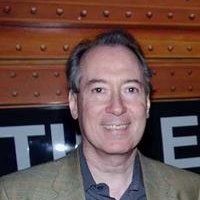 Dan Gillmor is technology columnist for the San Jose Mercury News,
Silicon Valley's daily newspaper. He also writes a daily Web-based column for SiliconValley.com,
a KnightRidder.com site that is an online affiliate of the Mercury News. His column runs in many other U.S.
newspapers, and he appears regularly on radio and television. He has been consistently listed by industry publications as
among the most influential journalists in his field.
Dan Gillmor is technology columnist for the San Jose Mercury News,
Silicon Valley's daily newspaper. He also writes a daily Web-based column for SiliconValley.com,
a KnightRidder.com site that is an online affiliate of the Mercury News. His column runs in many other U.S.
newspapers, and he appears regularly on radio and television. He has been consistently listed by industry publications as
among the most influential journalists in his field.
Gillmor joined the Mercury News in September 1994 after about six years with the Detroit Free Press.
Before that, he was with the Kansas City Times and several newspapers in Vermont. A Phi Beta Kappa graduate of the University of Vermont,
Gillmor received a Herbert Davenport fellowship in 1982 for economics and business reporting at the University of Missouri
School of Journalism. During the 1986-1987 academic year he was a journalism fellow at the University of Michigan in Ann Arbor,
where he studied history, political theory and economics. He has won several state and regional journalism awards.
Gillmor has had a longstanding interest in technology. He studied programming in high school. He bought his first personal
computer in the late 1970s and first went online in the early 1980s. Before becoming a journalist he played music professionally
for seven years.
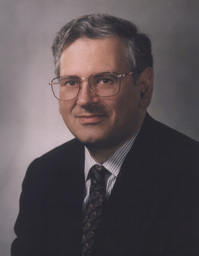 Robert E. Kahn is Chairman, CEO and President of the Corporation for National Research Initiatives (CNRI), which he founded in 1986 after a thirteen year term at the U.S. Defense Advanced Research Projects Agency (DARPA). CNRI was created as a not-for-profit organization to provide leadership and funding for research and development of the National Information Infrastructure.
Robert E. Kahn is Chairman, CEO and President of the Corporation for National Research Initiatives (CNRI), which he founded in 1986 after a thirteen year term at the U.S. Defense Advanced Research Projects Agency (DARPA). CNRI was created as a not-for-profit organization to provide leadership and funding for research and development of the National Information Infrastructure.
After receiving a B.E.E. from the City College of New York in 1960, Dr. Kahn earned M.A. and Ph.D. degrees from Princeton University in 1962 and 1964 respectively. He worked on the Technical Staff at Bell Laboratories and then became an Assistant Professor of Electrical Engineering at MIT. He took a leave of absence from MIT to join Bolt Beranek and Newman, where he was responsible for the system design of the Arpanet, the first packet-switched network. In 1972 he moved to DARPA and subsequently became Director of DARPA's Information Processing Techniques Office (IPTO). While Director of IPTO he initiated the United States government's billion dollar Strategic Computing Program, the largest computer research and development program ever undertaken by the federal government. Dr. Kahn conceived the idea of open-architecture networking. He is a co-inventor of the TCP/IP protocols and was responsible for originating DARPA's Internet Program. CNRI provides the Secretariat for the Internet Engineering Task Force (IETF). Dr. Kahn also coined the term National Information Infrastructure (NII) in the mid 1980s which later became more widely known as the Information Super Highway.
In his recent work, Dr. Kahn has been developing the concept of a digital object architecture as a key middleware component of the NII. This notion is providing a framework for interoperability of heterogeneous information systems and is being used in several applications such as the Digital Object Identifier (DOI). He is a co-inventor of Knowbot programs, mobile software agents in the network environment.
Dr. Kahn is a member of the National Academy of Engineering and a former member of its Computer Science and Technology Board, a Fellow of the IEEE, a Fellow of AAAI, a fellow of ACM. He is a former member of the President's Information Technology Advisory Committee, a former member of the Board of Regents of the National Library of Medicine and the President's Advisory Council on the National Information Infrastructure. He is a recipient of the AFIPS Harry Goode Memorial Award, the Marconi Award, the ACM SIGCOMM Award, the President's Award from ACM, the IEEE Koji Kobayashi Computer and Communications Award, the IEEE Alexander Graham Bell Medal, the IEEE Third Millennium Medal, the ACM Software Systems Award, the Computerworld/Smithsonian Award, the ASIS Special Award and the Public Service Award from the Computing Research Board. He has twice received the Secretary of Defense Civilian Service Award. He is a recipient of the 1997 National Medal of Technology, the 2001 Charles Stark Draper Prize from the National Academy of Engineering, and the 2002 Prince of Asturias Award. He has received honorary degrees from Princeton University, University of Pavia, ETH Zurich, University of Maryland, George Mason University, and the University of Central Florida.
 Xeni Jardin (say: /SHEH-nee zhar-DAN/) is a tech culture journalist and co-editor of the collaborative weblog BoingBoing,
the Bloggie-award-winning "Directory of Wonderful Things."
Xeni Jardin (say: /SHEH-nee zhar-DAN/) is a tech culture journalist and co-editor of the collaborative weblog BoingBoing,
the Bloggie-award-winning "Directory of Wonderful Things."
She is a Contributing Writer for WIRED Magazine. Her work has appeared online, on-air, and in print, in venues such as MSNBC, WIRED News, National Public Radio (NPR), FINE LIVING Network, PBS, Grammy Magazine, DGA (Directors Guild of America) Magazine, WGA (Writers Guild of America) Magazine, LA Weekly, GOTHAM, Daily Candy, Silicon Alley Reporter (now Venture Reporter), Digital Coast Reporter, and elsewhere.
As a technology conference developer, she has produced, created, and hosted events which include Wired Magazine's Nextfest, and the Investment Capital Conference (which, in its 12th year, is the world's longest-running VC event), and internal CxO thinktanks for companies including Motorola (event link here).
Previously, she was Vice President of Rising Tide Studios (RTS), the publishing company behind Silicon Alley Reporter, Digital Coast Reporter, and other tech publications. Xeni served as Senior Writer and oversaw the company's annual conference series, which included The Rising Tide Summit (hosted by Charlie Rose of television's "The Charlie Rose Show" and "60 Minutes II), Silicon Alley 2001, Wireless 2001, The International Network, Internet Healthcare 2001, The Venture Capital Summit, Digital Coast 2000, as well as a series of invite-only CEO gatherings.
Participants and speakers included CEOs, authors, artists, and thought leaders from academia and government, including counterterrorism expert L. Paul Bremer; attorney and Innocence Project founder Barry Scheck; RIM (Blackberry) CEO James Balsillie; musician and Beatnik founder Thomas Dolby Robertson; Broadcast.com founder and Dallas Mavericks owner Mark Cuban; former BMG CEO Strauss Zelnick; ICQ founder Yossi Vardi; former Bertelsmann e-commerce Group CEO Andreas Schmidt; filmmakers Darren Aronofsky, Wayne Wang, and Penelope Spheeris; Oxygen CEO Gerry Laybourne; Esther Dyson; former Terra/Lycos CEO Bob Davis; Jimmy Page of Led Zeppelin; LA Lakers star Shaquille O'Neal; analyst Henry Blodget; New.net founder Bill Gross; RealNetworks CEO Rob Glaser; nanotechnologist Ralph Merkle; actor Melanie Griffith; and many others.
Before joining RTS, she managed communications and helped launch a technology company with former top executives from Sun, BEA, PriceWaterhouseCoopers, and Infoseek/GO Network.
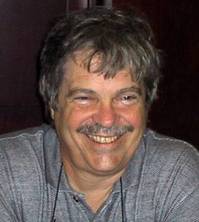 Alan Kay is one of the earliest pioneers of object-oriented programming, personal computting and graphical user interfaces. His contributions been recognized with the Charles Stark Draper Prize of the National Academy of Engineering (with Robert Taylor, Butler Lampson, and Charles Thacker), the A.M. Turing Award from the Association of Computing Machinery, and the Kyoto Prize from the Inamori Foundation. This work was done in the rich context of ARPA and Xerox PARC with many talented colleagues. He has been elected a Fellow of the American Academy of Arts and Sciences, the National Academy of Engineering, the Royal Society of Arts, and the Computer History Museum.
Alan Kay is one of the earliest pioneers of object-oriented programming, personal computting and graphical user interfaces. His contributions been recognized with the Charles Stark Draper Prize of the National Academy of Engineering (with Robert Taylor, Butler Lampson, and Charles Thacker), the A.M. Turing Award from the Association of Computing Machinery, and the Kyoto Prize from the Inamori Foundation. This work was done in the rich context of ARPA and Xerox PARC with many talented colleagues. He has been elected a Fellow of the American Academy of Arts and Sciences, the National Academy of Engineering, the Royal Society of Arts, and the Computer History Museum.
While at the ARPA project at the University of Utah in the late 60s, he invented dynamic object-oriented programming, was part of the original team that developed continuous tone 3D graphics, was the codesigner of the FLEX Machine, an early desktop computer with graphical user interface and object-oriented operating system, conceived the Dynabook, a laptop personal computer for children of all ages, and participated in the design of the ARPAnet. At Xerox PARC, inspired by children, he invented Smalltalk (with important contributions by Dan Ingalls), the first completely object-oriented authoring and operating system (which included the now ubiquitous overlapping window interface), instigated the bit-map screen, screen painting and animation, participated in desk-top publishing, other desktop media, and the development of the Alto, the first modern networked personal computer.
He has a BA in Mathematics and Biology with minor concentrations in English and Anthropology from the University of Colorado, 1966. MS and PhD in Computer Science (both with distinction) from the University of Utah, 1968 and 1969, and an Honorary Doctorate from the Kungl Tekniska Hoegskolan in Stockholm. He has been a Xerox Fellow, Chief Scientist of Atari, Apple Fellow, and Disney Fellow. In 2001 he founded Viewpoints Research Institute, a non-profit organization dedicated to children and learning. He is currently a Senior Fellow at HP Labs, an Adjunct Professor of Computer Science at UCLA and a Visiting Professor at Kyoto University.
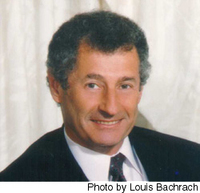 Dr. Leonard Kleinrock created the basic
principles of packet switching, the technology underpinning
the Internet, while a graduate student at MIT.
This was a decade before
the birth of the Internet which occurred when his host
computer at UCLA became the first node of
the Internet in September 1969. He wrote the first paper and
published the first book on the subject; he also directed the
transmission of the first message to pass over the
Internet. He was listed by the Los Angeles Times in 1999
as among the "50 People Who Most Influenced Business This
Century".
Dr. Leonard Kleinrock created the basic
principles of packet switching, the technology underpinning
the Internet, while a graduate student at MIT.
This was a decade before
the birth of the Internet which occurred when his host
computer at UCLA became the first node of
the Internet in September 1969. He wrote the first paper and
published the first book on the subject; he also directed the
transmission of the first message to pass over the
Internet. He was listed by the Los Angeles Times in 1999
as among the "50 People Who Most Influenced Business This
Century".
Dr. Kleinrock received his Ph.D. from MIT in 1963 and has served as
a professor of computer science at the
University of California, Los Angeles since then,
serving as chairman of the department from 1991-1995. He
received his BEE degree from CCNY in 1957 (also an
Honorary Doctor of Science from CCNY in 1997, and an
Honorary Doctor of Science from the
University of Massachusetts, Amherst in 2000). He has
published more than 240 papers and authored six books on a
wide array of subjects including queueing theory, packet
switching networks, packet radio networks, local area
networks, broadband networks, gigabit networks and nomadic
computing.
Dr. Kleinrock is a member of the
American Academy of Arts and Sciences, a member of the
National Academy
of Engineering, an IEEE fellow, an ACM fellow and
a founding member of the Computer Science and
Telecommunications Board of the
National Research Council.
Among his many honors, he is the recipient of the CCNY
Townsend Harris Medal, the CCNY Electrical Engineering Award,
the Marconi Award, the L.M. Ericsson Prize, the NAE Charles
Stark Draper Prize, the Okawa Prize, the IEEE Internet
Millennium Award, the UCLA Outstanding Teacher Award, the
Lanchester Prize, the ACM SIGCOMM Award, the Sigma Xi Monie
Ferst Award, the INFORMS Presidents Award, and the IEEE Harry
Goode Award.
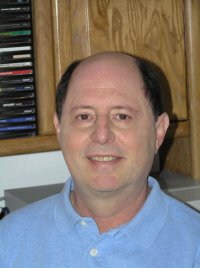 Dr. Charles Kline is a consultant on Internet technologies, network security, software patents and business strategies.
He is also an 'angel' investor and advisor for startup companies.
Dr. Charles Kline is a consultant on Internet technologies, network security, software patents and business strategies.
He is also an 'angel' investor and advisor for startup companies.
As a graduate student at UCLA, Charles ('Charley') Kline worked with Steve Crocker, Vint Cerf,
Jon Postel and Len Kleinrock on the development of the ARPANET and Internet.
In September of 1969, he sent test transmissions between the computer at UCLA and the first Interface Message Processor (IMP)
in order to develop the earliest protocols. On October 29, 1969, Charley attempted to remotely
access the Stanford Research Institute (SRI) computer and managed to send the first letters of the word 'LOGIN'
before the computer at SRI crashed. Later that day, he was able to successfully login to the SRI computer. At that moment, computer networking changed from a concept into a reality!
Charley continued his research at UCLA and received a Ph.D. for his pioneering works on computer system security,
network security and encryption protocols. He remained at UCLA and led research efforts into the fundamental concepts
of distributed computing.
Charley left UCLA to form Locus Computing Corporation, one of the largest Unix and open systems companies.
Locus developed the AIX operating system for IBM as well as the first PC networks. After Locus,
Charley has been involved with several startup companies. More recently, Charley was a senior technologist and product line
manager at Cisco Systems.
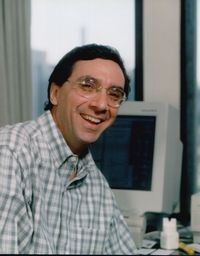 John Markoff joined The New York Times in March 1988 as a reporter for Business Day. He writes about computers and technology issues and is based in San Francisco as West Coast Correspondent. Prior to joining the Times, he worked for The San Francisco Examiner from 1985 to 1988.
Mr. Markoff has written about the field of technology since 1977.
John Markoff joined The New York Times in March 1988 as a reporter for Business Day. He writes about computers and technology issues and is based in San Francisco as West Coast Correspondent. Prior to joining the Times, he worked for The San Francisco Examiner from 1985 to 1988.
Mr. Markoff has written about the field of technology since 1977.
He covered technology and the defense industry for The Pacific News Service in San Francisco from 1977 to 1981; he was a reporter at Infoworld from 1981 to 1983; he was the West Coast editor for Byte Magazine from 1984 to 1985 and wrote a column on personal computers for The San Jose Mercury from 1983 to 189 5.
He has also been a lecturer at the University of California at Berkeley School of Journalism. He is currently an adjunct faculty member of the Stanford University Journalism Department where he teaches a course on reporting on Silicon Valley.
He was named as one of Upside Magazine's Digital Elite 100 in both 1996,1997 and 1998. He was named one of the nation's five most influential technology reporters by Marketing Computers magazine in 1997. The TJFR Business News Reporter named him as one of the nation's top 100 newspaper reporters in 1999, 2000, 2001. Technology Marketing Magazine named as the nation's second most influential newspaper reporter covering technology last year.
In 1988, Mr. Markoff received the Software Publishers Association's award for best news reporting. The Times nominated him for a Pulitzer Prize in 1995, 1998 and 2000. The San Francisco Examiner nominated him for a Pulitzer in 1987.
Born in Oakland, California on October 24, 1949, Mr. Markoff grew up in Palo Alto, California and graduated from Whitman College, Walla Walla, Washington, in 1971. He attended graduate school at the University of Oregon and has a masters degree in sociology.
Mr. Markoff is the co-author of 'The High Cost of High Tech', published in 1985 by Harper and Row. More recently he wrote 'Cyberpunk: Outlaws and Hackers on the Computer Frontier' with Katie Hafner, which was published in 1991 by Simon and Schuster. In January of 1996 Hyperion published 'Takedown: The Pursuit and Capture of America's Most Wanted Computer Outlaw', which he co-authored with Tsutomu Shimomura.
He is currently completing a new book: 'What the Dormouse Said: The Untold Story of How the Sixties Counterculture and Antiwar Movement Influenced the Personal Computer Industry'. It is scheduled to be published by Viking Press in the Spring of 2005
Mr. Markoff is married to Leslie Terzian Markoff and they live in San Francisco, Calif.
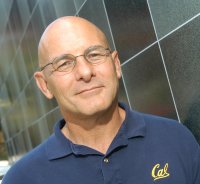 David Patterson received his Ph.D. from UCLA and then joined the faculty at the University of California at Berkeley in 1977, where he now holds the Pardee Chair of Computer Science. He is a member of the National Academy of Engineering and is a fellow of both the ACM and the IEEE.
David Patterson received his Ph.D. from UCLA and then joined the faculty at the University of California at Berkeley in 1977, where he now holds the Pardee Chair of Computer Science. He is a member of the National Academy of Engineering and is a fellow of both the ACM and the IEEE.
He led the design and implementation of RISC I, likely the first VLSI Reduced Instruction Set Computer. This research became the foundation of the SPARC architecture, used by Sun Microsystems and others. He was a leader, along with Randy Katz, of the Redundant Arrays of Inexpensive Disks project (or RAID), which led to reliable storage systems from many companies. He is co-author of five books, including two with John Hennessy, who is now President of Stanford University. Patterson has been chair of the CS division at Berkeley, the ACM SIG in computer architecture, and the Computing Research Association, and he currently serves on the information technology committee for the U.S. President and as President of ACM.
His teaching has been honored by the ACM, the IEEE, and the University of California.
Patterson shared the 1999 IEEE Reynold Johnson Information Storage Award with Randy Katz for the development of RAID
and shared the 2000 IEEE von Neumann medal and the 2005 CandC prize with John Hennessy.
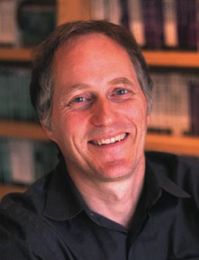 Tim O'Reilly is founder and CEO of O'Reilly Media, thought by many to be the best computer book publisher in the world. In addition to publishing pioneering books like Ed Krol's The Whole Internet User's Guide and Catalog (selected by the New York Public Library as one of the most significant books of the twentieth century), O'Reilly has also been a pioneer in the popularization of the Internet. O'Reilly's Global Network Navigator site (GNN, which was sold to America Online in September 1995) was the first Web portal and the first true commercial site on the World Wide Web.
Tim O'Reilly is founder and CEO of O'Reilly Media, thought by many to be the best computer book publisher in the world. In addition to publishing pioneering books like Ed Krol's The Whole Internet User's Guide and Catalog (selected by the New York Public Library as one of the most significant books of the twentieth century), O'Reilly has also been a pioneer in the popularization of the Internet. O'Reilly's Global Network Navigator site (GNN, which was sold to America Online in September 1995) was the first Web portal and the first true commercial site on the World Wide Web.
Tim has been an activist for internet standards and for Open Source software. He has led successful public relations campaigns on behalf of key internet technologies, helping to block Microsoft's 1996 limits on TCP/IP in NT Workstation, organizing the " summit" of key free software leaders where the term "Open Source" was first widely agreed upon, and, most recently, organizing a series of protests against frivolous software patents. Tim received Infoworld's Industry Achievement Award in 1998 for his advocacy on behalf of the Open Source community.
Tim has written numerous books on computer topics, most notably UNIX Text Processing (with Dale Dougherty; Howard Sams, 1987), Managing UUCP and USENET (with Grace Todino; no longer in print), The X Window System Users' Guide (with Valerie Quercia), and The X Toolkit Intrinsics Programming Manual (with Adrian Nye), UNIX Power Tools (with Jerry Peek and Mike Loukides) and Windows XP in a Nutshell (with David Karp and Troy Mott).
Tim also conceived an award-winning series of travel books, published by O'Reilly affiliate Travelers' Tales. His company's Patient Centered Guides provide information from "health system hackers"--patient advocates who have experienced the best and worst of what the medical system has to offer, and pass along their experience for sufferers of chronic or life-changing diseases.
Tim has served on the board of trustees for both the Internet Society and the Electronic Frontier Foundation, two organizations devoted to making sure that the Internet fulfills its promise. He is on the boards of CollabNet, Macromedia, the Open Source Applications Foundation, and the Nutch Organization.
Tim graduated from Harvard College in 1975 with a B.A. cum laude in Classics. His honors thesis explored the tension between mysticism and logic in Plato's dialogues.
 Larry Press is Professor of Information Systems at California State
University, Dominguez Hills. He has moved between industry and academia
with earlier professorships at the University of Southern California and the
University of Lund, Sweden. He has worked on a variety of projects, ranging
from system programming, modeling concept acquisition and early data mining
to planning Internet and intranet strategy for Hyundai and designing a
wireless network for a dorm complex of 22 small apartment buildings. His
first brush with on-line communities was on the Q32 Time-Sharing System at
the System Development Corporation, and his first involvement with wide-area
networks was as a participant in a Teleconference on Teleconferencing hosted
by ISI in 1975. He has edited two book series and been a contributing
editor for several publications including PC, PC World, Abacus, The
Communications of the ACM, and OnTheInternet. He received BS, MBA, and PhD
degrees from UCLA.
Larry Press is Professor of Information Systems at California State
University, Dominguez Hills. He has moved between industry and academia
with earlier professorships at the University of Southern California and the
University of Lund, Sweden. He has worked on a variety of projects, ranging
from system programming, modeling concept acquisition and early data mining
to planning Internet and intranet strategy for Hyundai and designing a
wireless network for a dorm complex of 22 small apartment buildings. His
first brush with on-line communities was on the Q32 Time-Sharing System at
the System Development Corporation, and his first involvement with wide-area
networks was as a participant in a Teleconference on Teleconferencing hosted
by ISI in 1975. He has edited two book series and been a contributing
editor for several publications including PC, PC World, Abacus, The
Communications of the ACM, and OnTheInternet. He received BS, MBA, and PhD
degrees from UCLA.
Dr. Press has a long-standing interest in the global diffusion of the
Internet. As a member of the Mosaic group, he and his colleagues defined
the first comprehensive, multidimensional framework for characterizing the
state of the Internet in a nation. They have used their framework for
survey research and in case studies of over thirty nations with sponsorship
from the ITU, Rand, SAIC, UNDP and others. He is also interested in
municipal networks, and has been working on a community network in Hermosa
Beach.
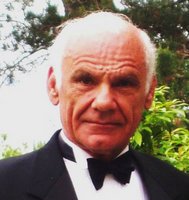 Lawrence G. Roberts is the Founder, CEO of Anagran and Founder, Vice Chairman of Caspian Networks.
Anagran is develping the next generation IP router. At Caspian Networks he has designed and built an IP Flow Routers,
a new QoS capable type of Internet router. Dr. Roberts has been instrumental in packet data communications
since the early 1960's. His pioneering work on computer communications resulted in the Internet and his subsequent
networking innovations permit the integration of voice and video into the Internet
Lawrence G. Roberts is the Founder, CEO of Anagran and Founder, Vice Chairman of Caspian Networks.
Anagran is develping the next generation IP router. At Caspian Networks he has designed and built an IP Flow Routers,
a new QoS capable type of Internet router. Dr. Roberts has been instrumental in packet data communications
since the early 1960's. His pioneering work on computer communications resulted in the Internet and his subsequent
networking innovations permit the integration of voice and video into the Internet
Dr. Roberts has BS, MS, and Ph.D. Degrees from MIT and was responsible for the design, initiation, planning and development of ARPANET,
the world's first major packet network, the predecessor to Internet, while the Director of Information Processing Techniques for DARPA.
After developing packet switching, Dr. Roberts founded the world's first packet data communications carrier,
Telenet, which was sold to GTE in 1979 and subsequently became the data division of Sprint.
In 1982, Dr. Roberts became CEO of DHL Corporation, from 1983 to 1993, Dr. Roberts was CEO of NetExpress, and from 1993-1998 CEO of ATM Systems.
Dr. Roberts has received numerous awards for his work, including the Secretary of Defense Meritorious Service Medal,
the Harry Goode Memorial Award from the American Federation of Information Processing, the IEEE Computer Pioneer Award,
the Interface Conference Award, in 1982, the L.M. Ericsson prize for research in data communications,
in 1992 the IEEE Computer Society's most prestigious award in the communications field, the W. Wallace McDowell Award,
in 1998 the ACM SIGCOMM Award for lifetime achievement in communications, in 2000 IEEE 2000 Internet Award,
in 2001 the NAE Draper award, and in 2002.the Principe de Asturias Award.
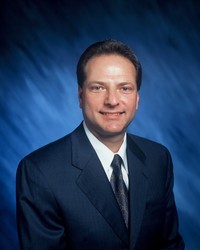 Dr. Henry Samueli is Co-Founder, Chairman, and Chief Technical Officer (CTO) of Broadcom Corporation. The Office of the CTO is responsible for driving the vision of Broadcom's research and development activities as well as helping coordinate corporate-wide engineering development strategies. Dr. Samueli has over 25 years of experience in the fields of communications systems engineering and digital signal processing.
Dr. Henry Samueli is Co-Founder, Chairman, and Chief Technical Officer (CTO) of Broadcom Corporation. The Office of the CTO is responsible for driving the vision of Broadcom's research and development activities as well as helping coordinate corporate-wide engineering development strategies. Dr. Samueli has over 25 years of experience in the fields of communications systems engineering and digital signal processing.
Dr. Samueli has served as CTO since the Company's inception in August 1991. He served as Co-Chairman from August 1991 until May 2003 and Chairman since May 2003. He also served as Vice President of Research and Development from August 1991 until March 2003. Since 1985 Dr. Samueli has been a professor in the Electrical Engineering Department at the University of California, Los Angeles (UCLA), where he has supervised advanced research programs in broadband communications circuits and digital signal processing, and he has published over 100 technical papers in these areas. Dr. Samueli has been on a leave of absence from UCLA since 1995. Dr. Samueli was the Chief Scientist and one of the founders of PairGain Technologies, Inc., a telecommunications equipment manufacturer in the digital subscriber line (DSL) industry, and he consulted for PairGain from 1988 to 1994. From 1980 until 1985 Dr. Samueli was employed in various engineering management positions in the Electronics and Technology Division of TRW, Inc., where he was responsible for the development of military broadband communications systems.
Dr. Samueli received a B.S., M.S. and Ph.D. in Electrical Engineering from the University of California, Los Angeles. He is a named inventor in 22 U.S. patents. He is a Fellow of the Institute of Electrical and Electronics Engineers (IEEE), a Fellow of the American Academy of Arts and Sciences, and a Member of the National Academy of Engineering.
 Google founders Larry Page and Sergey Brin recruited Eric Schmidt from Novell,
where he led that company's strategic planning, management and technology development as chairman and CEO.
Since coming to Google, Schmidt has focused on building the corporate infrastructure needed to maintain Google's rapid growth as a company and on ensuring that quality remains high while product development cycle times are kept to a minimum. Along with Page and Brin, Schmidt shares responsibility for Google's day-to-day operations. Schmidt's Novell experience culminated a 20-year record of achievement as an Internet strategist, entrepreneur and developer of great technologies. Schmidt's well-seasoned perspective perfectly complements Google's needs as a young and rapidly growing search engine with a unique corporate culture.
Google founders Larry Page and Sergey Brin recruited Eric Schmidt from Novell,
where he led that company's strategic planning, management and technology development as chairman and CEO.
Since coming to Google, Schmidt has focused on building the corporate infrastructure needed to maintain Google's rapid growth as a company and on ensuring that quality remains high while product development cycle times are kept to a minimum. Along with Page and Brin, Schmidt shares responsibility for Google's day-to-day operations. Schmidt's Novell experience culminated a 20-year record of achievement as an Internet strategist, entrepreneur and developer of great technologies. Schmidt's well-seasoned perspective perfectly complements Google's needs as a young and rapidly growing search engine with a unique corporate culture.
Prior to his appointment at Novell, Schmidt was chief technology officer and corporate executive officer at Sun Microsystems, Inc., where he led the development of Java, Sun's platform-independent programming technology, and defined Sun's Internet software strategy. Before joining Sun in 1983, Schmidt was a member of the research staff at the Computer Science Lab at Xerox Palo Alto Research Center (PARC), and held positions at Bell Laboratories and Zilog. Schmidt has a bachelor of science degree in electrical engineering from Princeton University, and a master's and Ph.D. in computer science from the University of California-Berkeley.
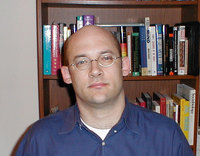 Mr. Shirky divides his time between consulting, teaching, and writing on the social and economic effects of Internet technologies. His consulting practice is focused on the rise of decentralized technologies such as peer-to-peer, web services, and wireless networks that provide alternatives to the wired client/server infrastructure that characterizes the Web. Current clients include Nokia, GBN, the Library of Congress, the Highlands Forum, the Markle Foundation, and the BBC.
Mr. Shirky divides his time between consulting, teaching, and writing on the social and economic effects of Internet technologies. His consulting practice is focused on the rise of decentralized technologies such as peer-to-peer, web services, and wireless networks that provide alternatives to the wired client/server infrastructure that characterizes the Web. Current clients include Nokia, GBN, the Library of Congress, the Highlands Forum, the Markle Foundation, and the BBC.
In addition to his consulting work, Mr. Shirky is an adjunct professor in NYU's graduate Interactive Telecommunications Program (ITP), where he teaches courses on the interrelated effects of social and technological network topology -- how our networks shape culture and vice-versa. His current course, Social Weather, examines the cues we use to understand group dynamics in online spaces and the possible ways of improving user interaction by redesigning our social software to better reflect the emergent properties of groups.
Mr. Shirky has written extensively about the internet since 1996. Over the years, he has had regular columns in Business 2.0, FEED, OpenP2P.com and ACM Net_Worker, and his writings have appeared in the New York Times, the Wall Street Journal, the Harvard Business Review, Wired, Release 1.0, Computerworld, and IEEE Computer. He has been interviewed by Slashdot, Red Herring, Media Life, and the Economist's Ebusiness Forum. He has written about biotechnology in his "After Darwin" column in FEED magazine, and serves as a technical reviewer for O'Reilly's bioinformatics series. He helps program the "Biological Models of Computation" track for O'Reilly's Emerging Technology conferences.
Mr. Shirky frequently speaks on emerging technologies at a variety of forums and organizations, including PC Forum, the Internet Society, the Department of Defense, the BBC, the American Museum of the Moving Image, the Highlands Forum, the Economist Group, Storewidth, the World Technology Network, and several O'Reilly conferences on Peer-to-Peer, Open Source, and Emerging Technology.
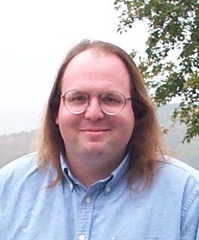 Ethan Zuckerman became a fellow of the Berkman Center in January, 2003. His work at Berkman focuses on the impact of technology on the developing world. His current projects include a study of global media attention, research on the use of weblogs and other social software in the developing world, and work on a clearinghouse for software for international development.
Ethan Zuckerman became a fellow of the Berkman Center in January, 2003. His work at Berkman focuses on the impact of technology on the developing world. His current projects include a study of global media attention, research on the use of weblogs and other social software in the developing world, and work on a clearinghouse for software for international development.
In 2000, Ethan founded Geekcorps, a non-profit technology volunteer corps. Geekcorps pairs skilled volunteers from US and European high tech companies with businesses in emerging nations for one to four month volunteer tours. Volunteers have served in 14 nations, completing over a hundred projects, and will serve in Ghana, Senegal, Mali, Vietnam and Morocco in 2004. Geekcorps became a division of the International Executive Service Corps in 2001, where Ethan served as a vice president from 2001-4.
Prior to founding Geekcorps, Ethan helped found Tripod, an early pioneer in the web community space. Ethan served as Tripod's first graphic designer and technologist, and later as VP of Business Development and VP of Research and Development. After Tripod's acquisition by Lycos in 1998, Ethan served as General Manager of the Angelfire.com division and as a member of the Lycos mergers and acquisitions team.
In 1993, Ethan graduated from Williams College with a BA in Philosophy. In 1993-4, he was a Fulbright Scholar at the University of Legon, Ghana and the National Theatre of Ghana, studying ethnomusicology and percussion.
Ethan was given the 2002 Technology in Service of Humanity Award by MIT's Technology Review Magazine and named to the TR100, TR's list of innovators under the age of 35. Recently, Ethan was named a Global Leader for Tomorrow by the World Economic Forum.



 Bob Aiken is the Director of Engineering for Cisco's International Academic Research and Technology Initiatives (ARTI).
Bob manages a team of respected Internet and network technology experts who help identify, define and accelerate
Internet architectures and technologies via Cisco's university research and advanced network research infrastructure programs.
Bob is a co-architect and co-lead with Javad Boroumand for the strategic National Lambda Rail (NLR) research environment and infrastructure.
Prior to joining Cisco, Bob was the network and security research program manager for
DOE's Computing, Information and Communications (formerly the HPCC) program. Bob was the program manager and co-author of DOE's
Next Generation Internet (NGI) initiative, and provided technical leadership and direction for DOE's international research
network (ESnet), gigabit testbeds, and middleware and GRID programs.
In 1991, Bob spent a year at the National Science Foundation (NSF) as the National Research and Education Network
(NREN) program manager, and with colleagues Peter Ford and Hans-Werner Braun co-authored the design and architecture of
the next generation NSFNET (vBNS, Network Access Points (NAPs)), which enabled the commercialization of the Internet backbone.
Before Bob's NSF tenure, he was DOE's HPCC network program manger, ESnet program manager, and Executive director of the ESnet steering committee, as well as the creator and manager of ESnet's Network Information,
Services, and Response group during ESnet's nascent period. Prior to Bob's experience on wide area networks, Bob was responsible for managing supercomputers (e.g. CRAY) and coding their operating systems as well as providing high speed LAN based distributed services. His academic experience includes
being an Assistant Professor of Computer Science at Hood College in Maryland, an adjunct Professor at California State University Hayward,
and the Manager of Technology Services at Gettysburg College in Pennsylvania.
Bob also serves on the National Transportation Research Board (TRB)'s subcommittee on telecommuting.
Bob Aiken is the Director of Engineering for Cisco's International Academic Research and Technology Initiatives (ARTI).
Bob manages a team of respected Internet and network technology experts who help identify, define and accelerate
Internet architectures and technologies via Cisco's university research and advanced network research infrastructure programs.
Bob is a co-architect and co-lead with Javad Boroumand for the strategic National Lambda Rail (NLR) research environment and infrastructure.
Prior to joining Cisco, Bob was the network and security research program manager for
DOE's Computing, Information and Communications (formerly the HPCC) program. Bob was the program manager and co-author of DOE's
Next Generation Internet (NGI) initiative, and provided technical leadership and direction for DOE's international research
network (ESnet), gigabit testbeds, and middleware and GRID programs.
In 1991, Bob spent a year at the National Science Foundation (NSF) as the National Research and Education Network
(NREN) program manager, and with colleagues Peter Ford and Hans-Werner Braun co-authored the design and architecture of
the next generation NSFNET (vBNS, Network Access Points (NAPs)), which enabled the commercialization of the Internet backbone.
Before Bob's NSF tenure, he was DOE's HPCC network program manger, ESnet program manager, and Executive director of the ESnet steering committee, as well as the creator and manager of ESnet's Network Information,
Services, and Response group during ESnet's nascent period. Prior to Bob's experience on wide area networks, Bob was responsible for managing supercomputers (e.g. CRAY) and coding their operating systems as well as providing high speed LAN based distributed services. His academic experience includes
being an Assistant Professor of Computer Science at Hood College in Maryland, an adjunct Professor at California State University Hayward,
and the Manager of Technology Services at Gettysburg College in Pennsylvania.
Bob also serves on the National Transportation Research Board (TRB)'s subcommittee on telecommuting.
 Born, Jackson Hole, Wyoming October 3, 1947
Born, Jackson Hole, Wyoming October 3, 1947
 Gordon Bell is a senior researcher in Microsoft's Media Presence Research Group - a part of the Bay Area Research Center (BARC) maintaining an interest in startup ventures.
Gordon Bell is a senior researcher in Microsoft's Media Presence Research Group - a part of the Bay Area Research Center (BARC) maintaining an interest in startup ventures.

 Vinton G. Cerf is senior vice president of Technology Strategy for MCI. In this role, Cerf is responsible for helping to guide corporate strategy development from the technical perspective. In the fast moving world of telecommunications and Internet technology development, technical capabilities can have a critical impact on the success of corporate business strategies including product and service development, infrastructure investment and strategic acquisitions and partnerships.
Vinton G. Cerf is senior vice president of Technology Strategy for MCI. In this role, Cerf is responsible for helping to guide corporate strategy development from the technical perspective. In the fast moving world of telecommunications and Internet technology development, technical capabilities can have a critical impact on the success of corporate business strategies including product and service development, infrastructure investment and strategic acquisitions and partnerships.
 Vijay K. Dhir, professor of mechanical and aerospace engineering, was named Dean of UCLA's Henry Samueli School of Engineering and Applied Science in March 2003.
Vijay K. Dhir, professor of mechanical and aerospace engineering, was named Dean of UCLA's Henry Samueli School of Engineering and Applied Science in March 2003.
 Bran Ferren is a designer and technologist working in entertainment, product development, engineering, architecture and the sciences.
He is the former President of Research and Development and Creative Technology for Walt Disney Imagineering. Prior to that, he was the President of and Senior Designer for Associates and Ferren, which Disney acquired in 1993. He left Disney in 2000 to start Applied Minds Inc., with partner Danny Hillis.
Bran Ferren is a designer and technologist working in entertainment, product development, engineering, architecture and the sciences.
He is the former President of Research and Development and Creative Technology for Walt Disney Imagineering. Prior to that, he was the President of and Senior Designer for Associates and Ferren, which Disney acquired in 1993. He left Disney in 2000 to start Applied Minds Inc., with partner Danny Hillis.
 Pat Gelsinger is Senior Vice President and Chief Technology Officer of
Intel Corporation. Gelsinger joined Intel in 1979, and has more than 20
years of experience in general management and product development
positions. Gelsinger leads Intel's Corporate Technology Group, which
encompasses many Intel research activities, including leading Intel Labs
and Intel Research, and driving industry alignment with these
technologies and initiatives. As CTO, he coordinates Intel's longer-term
research efforts and helps ensure consistency from Intel's emerging
computing, networking and communications products and technologies.
Pat Gelsinger is Senior Vice President and Chief Technology Officer of
Intel Corporation. Gelsinger joined Intel in 1979, and has more than 20
years of experience in general management and product development
positions. Gelsinger leads Intel's Corporate Technology Group, which
encompasses many Intel research activities, including leading Intel Labs
and Intel Research, and driving industry alignment with these
technologies and initiatives. As CTO, he coordinates Intel's longer-term
research efforts and helps ensure consistency from Intel's emerging
computing, networking and communications products and technologies.
 Dan Gillmor is technology columnist for the San Jose Mercury News,
Silicon Valley's daily newspaper. He also writes a daily Web-based column for SiliconValley.com,
a KnightRidder.com site that is an online affiliate of the Mercury News. His column runs in many other U.S.
newspapers, and he appears regularly on radio and television. He has been consistently listed by industry publications as
among the most influential journalists in his field.
Dan Gillmor is technology columnist for the San Jose Mercury News,
Silicon Valley's daily newspaper. He also writes a daily Web-based column for SiliconValley.com,
a KnightRidder.com site that is an online affiliate of the Mercury News. His column runs in many other U.S.
newspapers, and he appears regularly on radio and television. He has been consistently listed by industry publications as
among the most influential journalists in his field.
 Robert E. Kahn is Chairman, CEO and President of the Corporation for National Research Initiatives (CNRI), which he founded in 1986 after a thirteen year term at the U.S. Defense Advanced Research Projects Agency (DARPA). CNRI was created as a not-for-profit organization to provide leadership and funding for research and development of the National Information Infrastructure.
Robert E. Kahn is Chairman, CEO and President of the Corporation for National Research Initiatives (CNRI), which he founded in 1986 after a thirteen year term at the U.S. Defense Advanced Research Projects Agency (DARPA). CNRI was created as a not-for-profit organization to provide leadership and funding for research and development of the National Information Infrastructure.
 Xeni Jardin (say: /SHEH-nee zhar-DAN/) is a tech culture journalist and co-editor of the collaborative weblog BoingBoing,
the Bloggie-award-winning "Directory of Wonderful Things."
Xeni Jardin (say: /SHEH-nee zhar-DAN/) is a tech culture journalist and co-editor of the collaborative weblog BoingBoing,
the Bloggie-award-winning "Directory of Wonderful Things."
 Alan Kay is one of the earliest pioneers of object-oriented programming, personal computting and graphical user interfaces. His contributions been recognized with the Charles Stark Draper Prize of the National Academy of Engineering (with Robert Taylor, Butler Lampson, and Charles Thacker), the A.M. Turing Award from the Association of Computing Machinery, and the Kyoto Prize from the Inamori Foundation. This work was done in the rich context of ARPA and Xerox PARC with many talented colleagues. He has been elected a Fellow of the American Academy of Arts and Sciences, the National Academy of Engineering, the Royal Society of Arts, and the Computer History Museum.
Alan Kay is one of the earliest pioneers of object-oriented programming, personal computting and graphical user interfaces. His contributions been recognized with the Charles Stark Draper Prize of the National Academy of Engineering (with Robert Taylor, Butler Lampson, and Charles Thacker), the A.M. Turing Award from the Association of Computing Machinery, and the Kyoto Prize from the Inamori Foundation. This work was done in the rich context of ARPA and Xerox PARC with many talented colleagues. He has been elected a Fellow of the American Academy of Arts and Sciences, the National Academy of Engineering, the Royal Society of Arts, and the Computer History Museum.
 Dr. Leonard Kleinrock created the basic
principles of packet switching, the technology underpinning
the Internet, while a graduate student at
Dr. Leonard Kleinrock created the basic
principles of packet switching, the technology underpinning
the Internet, while a graduate student at  Dr. Charles Kline is a consultant on Internet technologies, network security, software patents and business strategies.
He is also an 'angel' investor and advisor for startup companies.
Dr. Charles Kline is a consultant on Internet technologies, network security, software patents and business strategies.
He is also an 'angel' investor and advisor for startup companies.
 John Markoff joined The New York Times in March 1988 as a reporter for Business Day. He writes about computers and technology issues and is based in San Francisco as West Coast Correspondent. Prior to joining the Times, he worked for The San Francisco Examiner from 1985 to 1988.
Mr. Markoff has written about the field of technology since 1977.
John Markoff joined The New York Times in March 1988 as a reporter for Business Day. He writes about computers and technology issues and is based in San Francisco as West Coast Correspondent. Prior to joining the Times, he worked for The San Francisco Examiner from 1985 to 1988.
Mr. Markoff has written about the field of technology since 1977.
 David Patterson received his Ph.D. from UCLA and then joined the faculty at the University of California at Berkeley in 1977, where he now holds the Pardee Chair of Computer Science. He is a member of the National Academy of Engineering and is a fellow of both the ACM and the IEEE.
David Patterson received his Ph.D. from UCLA and then joined the faculty at the University of California at Berkeley in 1977, where he now holds the Pardee Chair of Computer Science. He is a member of the National Academy of Engineering and is a fellow of both the ACM and the IEEE.
 Tim O'Reilly is founder and CEO of O'Reilly Media, thought by many to be the best computer book publisher in the world. In addition to publishing pioneering books like Ed Krol's The Whole Internet User's Guide and Catalog (selected by the New York Public Library as one of the most significant books of the twentieth century), O'Reilly has also been a pioneer in the popularization of the Internet. O'Reilly's Global Network Navigator site (GNN, which was sold to America Online in September 1995) was the first Web portal and the first true commercial site on the World Wide Web.
Tim O'Reilly is founder and CEO of O'Reilly Media, thought by many to be the best computer book publisher in the world. In addition to publishing pioneering books like Ed Krol's The Whole Internet User's Guide and Catalog (selected by the New York Public Library as one of the most significant books of the twentieth century), O'Reilly has also been a pioneer in the popularization of the Internet. O'Reilly's Global Network Navigator site (GNN, which was sold to America Online in September 1995) was the first Web portal and the first true commercial site on the World Wide Web.
 Larry Press is Professor of Information Systems at California State
University, Dominguez Hills. He has moved between industry and academia
with earlier professorships at the University of Southern California and the
University of Lund, Sweden. He has worked on a variety of projects, ranging
from system programming, modeling concept acquisition and early data mining
to planning Internet and intranet strategy for Hyundai and designing a
wireless network for a dorm complex of 22 small apartment buildings. His
first brush with on-line communities was on the Q32 Time-Sharing System at
the System Development Corporation, and his first involvement with wide-area
networks was as a participant in a Teleconference on Teleconferencing hosted
by ISI in 1975. He has edited two book series and been a contributing
editor for several publications including PC, PC World, Abacus, The
Communications of the ACM, and OnTheInternet. He received BS, MBA, and PhD
degrees from UCLA.
Larry Press is Professor of Information Systems at California State
University, Dominguez Hills. He has moved between industry and academia
with earlier professorships at the University of Southern California and the
University of Lund, Sweden. He has worked on a variety of projects, ranging
from system programming, modeling concept acquisition and early data mining
to planning Internet and intranet strategy for Hyundai and designing a
wireless network for a dorm complex of 22 small apartment buildings. His
first brush with on-line communities was on the Q32 Time-Sharing System at
the System Development Corporation, and his first involvement with wide-area
networks was as a participant in a Teleconference on Teleconferencing hosted
by ISI in 1975. He has edited two book series and been a contributing
editor for several publications including PC, PC World, Abacus, The
Communications of the ACM, and OnTheInternet. He received BS, MBA, and PhD
degrees from UCLA.
 Lawrence G. Roberts is the Founder, CEO of Anagran and Founder, Vice Chairman of Caspian Networks.
Anagran is develping the next generation IP router. At Caspian Networks he has designed and built an IP Flow Routers,
a new QoS capable type of Internet router. Dr. Roberts has been instrumental in packet data communications
since the early 1960's. His pioneering work on computer communications resulted in the Internet and his subsequent
networking innovations permit the integration of voice and video into the Internet
Lawrence G. Roberts is the Founder, CEO of Anagran and Founder, Vice Chairman of Caspian Networks.
Anagran is develping the next generation IP router. At Caspian Networks he has designed and built an IP Flow Routers,
a new QoS capable type of Internet router. Dr. Roberts has been instrumental in packet data communications
since the early 1960's. His pioneering work on computer communications resulted in the Internet and his subsequent
networking innovations permit the integration of voice and video into the Internet
 Dr. Henry Samueli is Co-Founder, Chairman, and Chief Technical Officer (CTO) of Broadcom Corporation. The Office of the CTO is responsible for driving the vision of Broadcom's research and development activities as well as helping coordinate corporate-wide engineering development strategies. Dr. Samueli has over 25 years of experience in the fields of communications systems engineering and digital signal processing.
Dr. Henry Samueli is Co-Founder, Chairman, and Chief Technical Officer (CTO) of Broadcom Corporation. The Office of the CTO is responsible for driving the vision of Broadcom's research and development activities as well as helping coordinate corporate-wide engineering development strategies. Dr. Samueli has over 25 years of experience in the fields of communications systems engineering and digital signal processing.
 Google founders Larry Page and Sergey Brin recruited Eric Schmidt from Novell,
where he led that company's strategic planning, management and technology development as chairman and CEO.
Since coming to Google, Schmidt has focused on building the corporate infrastructure needed to maintain Google's rapid growth as a company and on ensuring that quality remains high while product development cycle times are kept to a minimum. Along with Page and Brin, Schmidt shares responsibility for Google's day-to-day operations. Schmidt's Novell experience culminated a 20-year record of achievement as an Internet strategist, entrepreneur and developer of great technologies. Schmidt's well-seasoned perspective perfectly complements Google's needs as a young and rapidly growing search engine with a unique corporate culture.
Google founders Larry Page and Sergey Brin recruited Eric Schmidt from Novell,
where he led that company's strategic planning, management and technology development as chairman and CEO.
Since coming to Google, Schmidt has focused on building the corporate infrastructure needed to maintain Google's rapid growth as a company and on ensuring that quality remains high while product development cycle times are kept to a minimum. Along with Page and Brin, Schmidt shares responsibility for Google's day-to-day operations. Schmidt's Novell experience culminated a 20-year record of achievement as an Internet strategist, entrepreneur and developer of great technologies. Schmidt's well-seasoned perspective perfectly complements Google's needs as a young and rapidly growing search engine with a unique corporate culture.
 Mr. Shirky divides his time between consulting, teaching, and writing on the social and economic effects of Internet technologies. His consulting practice is focused on the rise of decentralized technologies such as peer-to-peer, web services, and wireless networks that provide alternatives to the wired client/server infrastructure that characterizes the Web. Current clients include Nokia, GBN, the Library of Congress, the Highlands Forum, the Markle Foundation, and the BBC.
Mr. Shirky divides his time between consulting, teaching, and writing on the social and economic effects of Internet technologies. His consulting practice is focused on the rise of decentralized technologies such as peer-to-peer, web services, and wireless networks that provide alternatives to the wired client/server infrastructure that characterizes the Web. Current clients include Nokia, GBN, the Library of Congress, the Highlands Forum, the Markle Foundation, and the BBC.
 Ethan Zuckerman became a fellow of the Berkman Center in January, 2003. His work at Berkman focuses on the impact of technology on the developing world. His current projects include a study of global media attention, research on the use of weblogs and other social software in the developing world, and work on a clearinghouse for software for international development.
Ethan Zuckerman became a fellow of the Berkman Center in January, 2003. His work at Berkman focuses on the impact of technology on the developing world. His current projects include a study of global media attention, research on the use of weblogs and other social software in the developing world, and work on a clearinghouse for software for international development.